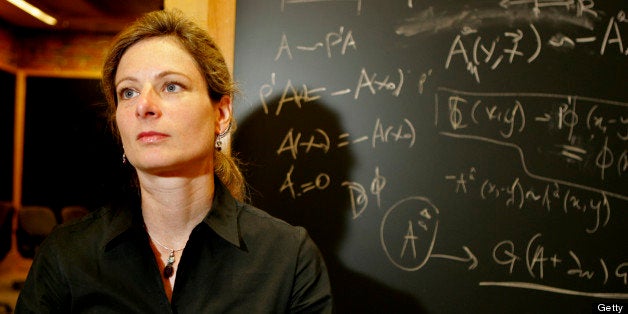
When it comes to teaching college physics, are women being left out of the equation? Almost half of undergraduate physics departments in the U.S. have no female professors, and that startling statistic seems to suggest that universities have a bias against hiring female physicists.
But maybe that's just not so. In a provocative new report from the American Institute of Physics (AIP), researchers argue that all-male physics departments cannot be used as evidence to suggest that there is bias against hiring women. Rather, they say, rigorous statistical analysis suggests that the real reason female physics faculty are rare is simply that physics departments have a small number of positions, and so few women are getting physics degrees.
In other words, even if physics departments wanted to hire more women, they'd have a hard time finding good candidates for the open positions.
"We do not mean to imply that there is no discrimination against women, that hostile environments do not exist, or that issues of gender representation do not need to be continually addressed in American universities," Catherine O'Riordan, vice president of the institute's physics resources, said in a written statement. "But we should no longer point to the absence of a woman in a physics department as evidence of bias."
Women make up only 13 percent of all physics faculty members nationwide, according to the report. And fewer women are earning bachelor's degrees in physics than that in other STEM (science, technology, engineering, and math) fields, including biology, chemistry and math. In 2011, women earned only 20 percent of bachelor's degrees in physics, and only 19 percent of all doctoral degrees in physics.
But if the report undercuts accusations of a hiring bias against female physicists, critics say it's wrong to ignore the fact that women are sorely underrepresented on physics faculties.
"Many national and highly respected journals have touted gender discrimination as a non-issue, congratulating women for their accomplishments while expressing concerns over the 'mancession' and dropping matriculation rates of young men," Janet Koster, executive director & CEO of the Association For Women In Science, told The Huffington Post in an email. "Unfortunately, the new AIP Report must be added to this roster."
Another critic questioned the report's methodology.
"It seems to me the question they should be asking is what is the probability of a new hire being a woman compared with the percentage in the current pool from which faculty is hired," Prof. Dame Athene Donald, physics professor and Equality Gender Champion at Cambridge University in England, told The Huffington Post in an email.
Debate about hiring bias aside, what's the solution to boosting the ranks of female physics professors? The report's researchers suggest it comes down to getting more women involved in physics, although the best way to do that remains unclear.
Going back in the pipeline all the way to the kids may be one way, according to Koster. "Researchers who study stereotype threat have demonstrated that girls as young as nine start to integrate the messaging that 'math is hard' (thanks, Barbie, for putting that idea into actual words) and thus is probably something at which boys are better," she said. "Although these associations start young, they persist in our subconscious and impact decisions regarding hiring, promotion, and recognition, subsequently impacting the retention of women in the STEM workforce ... including physics."
UPDATE: July 24 -- In response to criticism that their study did not address current hiring practices, researchers Susan White and Rachel Ivie told The Huffington Post on Wednesday: "Our report also notes that the proportion of women who are assistant professors is higher than that of recent PhD graduates. This speaks directly to the issue raised by Dr. Donald. In fact, women are hired at a higher rate that the available pool."
CORRECTION: A previous version of this post falsely indicated the researchers argued there was no evidence to suggest that women are being excluded from physics departments. The report's scope is more narrow, shows that counting the number of departments with no women is not a valid measure of bias. We regret the error.
